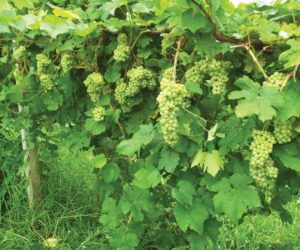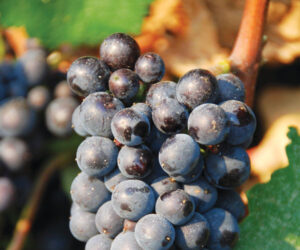Sugar solution
I am fairly new to home winemaking having only made a few kits and three batches of Muscadine wine. I have been using Daniel Pambianchi’s book Techniques in Home Winemaking as my primary reference and have recently acquired The Winemakers Answer Book. My confusion arises from a disparity in the Brix/SG/PA tables. Techniques in Home Winemaking lists an SG of 1.09 as 21.6 °Brix with a PA of 11.2 while The Winemakers Answer Book lists SG 1.09 as 22 °Brix with a PA of 12.7. Why the large difference?
Bob Currul
Lake Como, Florida
For the Answer Book I referenced the Table 1-2, Appendix 1, from Wine Analysis and Production, Zoecklein et al, 1995 for the Specific Gravity to Brix tables. Note that this conversion is at a specific temperature — 20 °C. Daniel’s table may have been slightly different, or just a choice in how the table calculation he referenced rounded the decimal points. As far as the potential alcohol, I know I’ve answered this before — even “experts” (wine chemists, etc.) will tell you that it’s really hard to accurately predict potential alcohol 100% of the time when you start with Brix or Specific Gravity (SG) — all you can get is within a range of perhaps 1.0%, depending on your fermentation.
The number I chose for 22 °Brix was the average of the range. What’s maddening is that SG and Brix are really just quick and dirty estimates of the amount of sugar in a wine — really just the density. They take into account all dissolved matter in the juice, which is more than just glucose and fructose, the fermentable sugars. Using Brix still works, though, because most of us don’t worry so much about being that accurate at the outset. If readers want to get real nitty-gritty, they can send samples out to a lab like Vinquiry or ETS to get a glucose + fructose reading in g/100 mL (sometimes reported as g/dL). Even then, ETS only will report a range (for example, they say 22.0 g/100 mL glucose + fructose will yield a range of alcohol 12.20%–13.3%. This is because each fermentation is its own unique microcosm: “Yeast species and strains vary in their abilities to utilize carbohydrates in formation of alcohol and other byproducts, as well as to grow in varying concentrations of alcohol.” (Zoecklein et al 108). The authors go on to say that the fermentation temperature, duration, rate of evaporation, surface-to-volume ratios in the fermenter and many other factors all play a role in what the final alcohol is. I remember publishing a calculation range. Winemakers will also tell you anecdotally that there are what we call “high conversion” years and “low conversion” years. Somehow, whether due to weather effects, grape chemistry or some sort of winemaking juju, there seem to be annual trends in how much — or how little — alcohol we get from each degree Brix, SG or g/dL of sugar. Ah the mysteries of wine! The consolation to the readers is that yes, even the pros and even the scientists recognize that one cannot entirely predict what one’s final alcohol will be!
Cane juice wine
I have been given a 1⁄2 gallon (2 L)of cane juice and been bequeathed to make it into wine, yet I have no recipe, nor idea how to do that. I make other country wines but am a bit lost on this one. Any ideas?
John Bailey
Tallahassee, Florida
That’s coming is a long answer but I hope it will speak to the many possible country wine situations in which you may find yourself. A good number of our readers choose to make beverages out of MOG (“material other than grapes”) and so frequently write to us when they’re faced with a particular non-grape conundrum. I think you’ll find that making wine with sugar cane will be very similar to making wine with any other non-grape fruit, flower or vegetable substance. With an idea of what you want to produce and a little tweaking of the starting material, you’ll be on your way to following your instincts in no time.
I assume when you say “cane juice” you mean sugar cane juice? And I hope if that was the case you put it in the freezer while you did your recipe research — or else you probably found your little half gallon gift started to ferment away on its own! Just like any kind of fruit or plant juice, sugar cane juice is full of sugar — sucrose to be exact — and your friendly neighborhood yeast will go after it just like they would grape juice. In fact, your run of the mill white table sugar is just dehydrated sugar cane juice. Or do you mean you have a sugar cane syrup? This would mean that the liquid you possess has quite a bit more sugar than a “juice” would. Sugar cane syrup is boiled-down (or otherwise concentrated) sugar cane juice and can sometimes have a cooked aroma and flavor profile (much like molasses) if it was concentrated by heat or by boiling.
Either way, if you adjust your starting material to yield a stable product, you are in for a fun traditional winemaking adventure. I say traditional because fermented sugar cane “wine” has ancient cultural roots in the Philippines, in Angola, the Democratic Republic of Congo and other sugar-cane growing countries. Just as grape-based wines developed in grape-friendly climates and rice-based “wines” like sake came from rice-growing cultures, so have fermented sugar cane beverages evolved over many centuries in areas of the world where sugar cane thrives.
Whether you call it Basi (in the Philippines), Lungwila (parts of Africa) or something else, wine made from sugar cane has a long established history in many parts of the world. Sugar cane wine’s souped-up relative is more familiar to us as rum, though its history as a beverage is a bit more dodgy. When African slaves working in the Caribbean’s sugar plantations found that diluted molasses (a byproduct of sugar production) could be fermented into a sort of wine, the plantation owners realized they could produce a fiery, cheap liquor that quickly gained popularity in Europe and North America.
Much more easy to transport (due to concentration of volume) and much less prone to spoil (due to the high alcohol content) than barrels of beer or of molasses wine, rum quickly became a sort of “illegal tender” in the slave trade during the seventeenth through nineteenth centuries. Sugar and sugar cane products are still important commodities today, and though rum is certainly popular, sugar cane wine has yet to catch on in mass-market appeal.
The most challenging thing about fermenting sugar cane juice (or syrup) is that, like any natural fermentable sugar source, its chemical composition will change depending on the climate it grew in. The amount of heat, light, rain, and everything else that contributes to the meso- and microclimate will affect how sweet the cane is, how acidic and how green-tasting (remember, sugar cane is a big grass) it is. If you’re dealing with syrup, the sugar content might be too much for any yeast to handle! Like most country wine practitioners, you’re going to have to do some adjustments to your raw material to achieve your desired end product.
This is where you can have some flexibility, but remember the following guidelines for must and juice adjustment before you start fermenting. Sugar cane is less acidic than most fruit juices so you will need to add some acid in order to prevent unwanted bacterial growth (bacteria like higher pHs) and to balance the taste profile. Wines always need a little bit of zing and the pH ranges of 4.0–5.5 I’ve been seeing for sugar cane juice just isn’t acidic enough to make a refreshing or stable table wine. You want something more along the lines of a pH of 3.10–3.65 and a TA of 5.0–8.0 g/L (lower pHs and higher TAs will yield a more tart product).
Sugar is another critical thing you have to balance. You need to start with enough sugar to ferment something that’s at least 9% alcohol or your wine will not age gracefully and may not be microbially stable. You don’t want too much sugar or the fermentation will never go dry; even the strongest yeast strains you can buy won’t ferment beyond 17–18% alcohol and you risk a stuck fermentation. If you’re starting with cane syrup, undoubtedly you will need to dilute your material to between 22–27 °Brix. If you want to end up with residual sugar that’s fine (and you can start with a higher Brix, say 30) but remember that if you have residual sugar, you risk a re-fermentation later in the bottle. To cut down the chances of a re-fermentation, my feeling is that when you have residual sugar you should always “sterile” filter your wine. By the way, I always put sterile in quotes because I take the hospital autoclave definition of sterility to heart; as it’s impossible to truly make anything in wine sterile, all you can do is try to exclude as many microbes as humanly possible. That being said, I find that really good sanitation and using a pad or cartridge filter that has a “pore size” of under 0.45 micron is perfect for minimizing the chances you’ll have a residual sugar refermentation in the bottle. When filtering, be sure to read the manufacturer’s instructions and follow them carefully. Only use the filter media that is recommended for the filter housing you are using or you may not get a good, clean filtration. If you’re not equipped to filter at home, an addition of potassium sorbate is another alternative.
The next thing that you might want to manage is the nutrient profile of the juice or must. Cane juice will certainly have some of the “goodies” that all natural juices do, but don’t assume it will have enough nitrogen, amino acids and micro-nutrients that wine yeast need to conduct a healthy fermentation. Always use a well-balanced yeast nutrient and not just Diammonium Phosphate (“DAP”) because you want to cover as many nutritional bases as possible. DAP simply provides nitrogen in the form of ammonia, which one prominent California winemaker I worked with once called “junk food for yeast.” Read manufacturer’s directions and suggestions for addition rates. It’s just as important not to over-feed a fermentation.
The final type of adjustment you might want to do depends on what taste or flavor profile you want in your final tipple. I would think sugar cane would be a neutral background against which you could play up a number of fun fruit flavors. I’m thinking pineapple, guava, peach, maybe even flowers? Something tropical definitely comes to mind. If your starting material is a concentrated syrup with molasses overtones, however, you might want to think of it like a dark rum cocktail. To that extent I would think a little citrus peel and perhaps some spice like star anise would be really interesting. Talk to your winemaking supply store to see if they carry any specialty flavoring agents. Or just walk into the organic section of your supermarket or specialty food store and peruse the frozen or bottled juice department. As long as a juice or concentrate doesn’t contain a potassium sorbate (which inhibits yeast cells) you can feel free to experiment. One of the beauties of making wine for your own consumption is that you don’t have to follow any of the strict additive laws that dictate what we professionals can and can’t do. Sounds like fun — let us know how it turns out!







